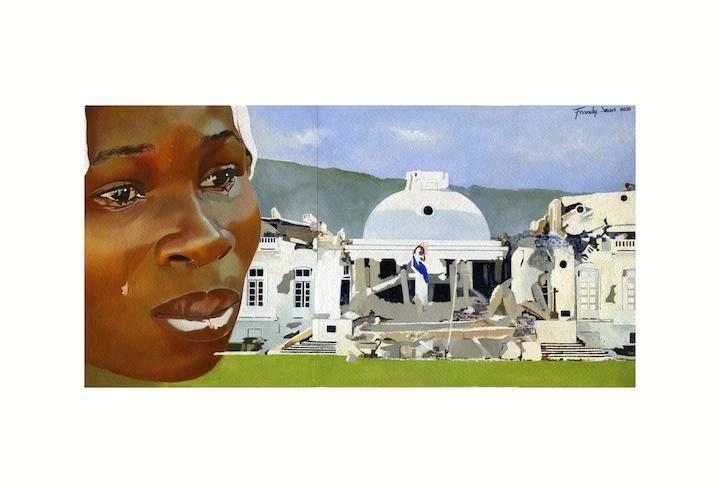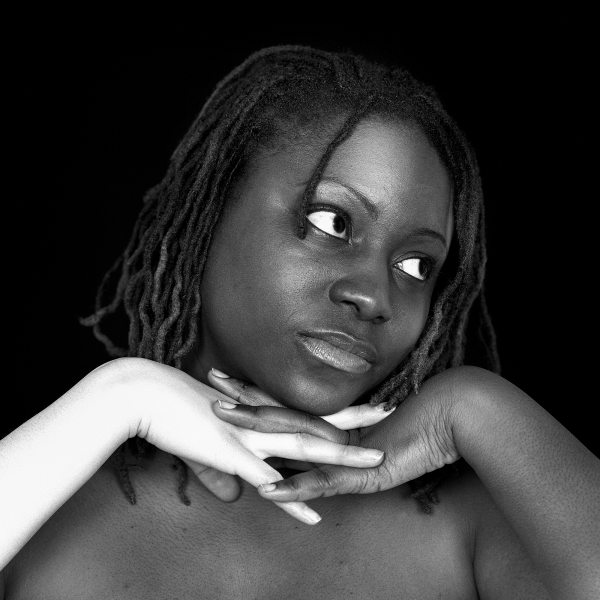
The exhibition "Woman: Mother, Daughter, Wife, Friend," curated by Thalia Vrachopoulos, investigates the diversity and complexity of women’s multiple roles in their private and public lives as they confront societal constraints, requirements and misconceptions with their own strategies. The participating artists, George Pol. Ioannides, Orestes Kourakis, Lena Morfogeni, Dongyeoun Lee, Vangelis Rinas, Frandy Jean, Jason River and Helene Pavlopoulou, respond to the theme with images that resound with deep sincerity, sympathetic rendering, and uncliched, unbiased depictions. The eight international artists, who hail from Greece, Haiti, America and South Korea, bring their individual cultures into focus, bypassing the generic stereotypic impact of "globalization" in art. There is no trace of the usual gratuitous images of sexuality or abuse, ubiquitous when women’s issues arise. There are no nudes on view.
Some artists explore the entrenched customs of their cultures as they evolve in the present day. Dongyeoun Lee creates hanging scrolls depicting almost life sized young woman clothed in traditional Korean dress, juggling the latest in technological devices. Its burgeoning affluence and ultra-modern skyscrapers that have transformed its cities obscure the conservative underpinnings of South Korean culture. In beautifully rendered images, the girls appear at ease bridging past and present, satisfying societal expectations without the rebellion typical of Western youth. Similarly, Helene Pavlopoulou's painting "Parallel Universes," 2016, (image top) portrays a dignified young woman in traditional apparel juxtaposed beside images of poppies, the main ingredient for heroin. There is irony within a culture that coexists with the specter of drugs while it maintains its conservative traditions. The subtle rounded forms of the cylindrical poppy plant are repeated in the imaginatively conceived floor cum background set behind the striking figure.
Greek artist Vangelos Rinas's unique imagery displays semi-obscured female features in faces with muted external boundaries, which seem to merge and float into the background and foreground of the formats. Thick lines jut inward from the edges of the pictures into the area of the undefined faces; these works suggest an identity crisis where one merges one’s self-image with the identity of others. Women are often denied their individuality by being submerged within a group such as “sisters,” not appreciated for their own achievements or personal merits.

In her forthright depiction of female emotions, Lena Morfogeni focuses intimately on expressive facial features in paintings that extend over a psychological range from calm to tears. Frandy Jean's restrained watercolor paintings of a distressed child, and of a young woman contemplating the devastation of a city block, evoke a universal sense of sadness which factors into the daily lives of individuals who experience the aftermath of an earthquake. (image above) Frandy's clear, sensitively wrought portrayals are moving and sympathetic, beautifully rendered and pure in feeling.
In his black and white photograph, "Mal & Amy," (image below) Jason River juxtaposes black and white skin tones that highlight the increasing social acceptance of inter-racial relationships in Western culture. River's compressed photographs stress the intimate, emotionally expressive quality of diverse hands of different individuals united in a unique form of expression. His striking images offer a glimpse into a domain of rapidly disintegrating social-racial divisions.

In contrast, Frank Gimpaya's photographs explore women as they carry on with personal tasks in private moments of fleeting solitude. In works that delve into conflicting emotions, Orestes Kourakis displays women in clown attire, whose unhappy faces in mirrored images reflect their true, far from funny feelings. George Pol. Ioannides explores female inequality in pictures where dripping blood symbolizes their suffering.
The impact of the paintings and photographs in this exhibition is delivered by the personal focus, which each artist so truthfully conveys. The works are by and large devoid of cliches, forced “cleverness” or gimmicks. In an exhibit that could have been oriented narrowly toward women’s obvious sexual and maternal functions, a multi-dimensional kaleidoscope of authentic moods, moments, and poetic visions spins generously. By juxtaposing past traditions with present skills and powers much of this art reaches the viewer on myriad levels capable of eliciting complex responses. The quality and message of the works allows viewers to relax their emotions and their minds rather than scramble to escape the usual turn-offs in the form of repellent or sordid images. On balance, the exhibit has a joyful effect; its intensions have a genuine regard for the integrity and diversity of the women subjects it celebrates.
